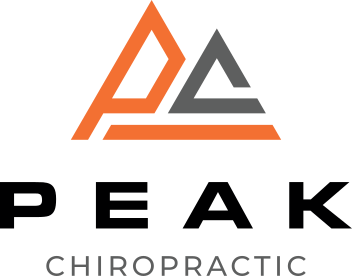You might've wondered why adjustments seem to provide relief from back pain. It's not just about the physical manipulation; there's a complex interplay of physiological factors at work. When you experience misalignments in your spine, your nervous system can be thrown off balance, affecting how your body communicates and reacts. Understanding this connection is essential for grasping the benefits of adjustments. But what specific mechanisms are involved in transforming these alignments into pain relief? The answer might surprise you.
Understanding Back Pain
Back pain is a common issue that affects millions of people worldwide, and it can stem from various causes. You might experience back pain due to muscle strains, poor posture, or even an injury. Sometimes, it can be linked to underlying medical conditions such as arthritis or herniated discs. Understanding the nature of your back pain is vital for effective management.
When you feel pain in your back, it's often your body's way of signaling an imbalance or injury. You may notice that certain movements exacerbate the pain, while others provide relief. This can help you identify the specific triggers that worsen your condition.
For example, if you sit for long periods, your muscles may become stiff, leading to discomfort. Recognizing these patterns can empower you to make lifestyle adjustments that alleviate pain.
Additionally, emotional stress can play a significant role in your back pain. High levels of stress can lead to muscle tension, which can exacerbate any existing discomfort. It's important to take into account both physical and emotional factors when you're dealing with back pain.
The Role of Chiropractic Adjustments
Chiropractic adjustments can play a significant role in managing and alleviating back pain. When you visit a chiropractor, they'll assess your spine and overall posture to identify misalignments. These misalignments, often referred to as subluxations, can lead to discomfort and tension in your back. By performing specific adjustments, your chiropractor helps restore proper alignment, allowing your body to function more effectively.
You might be surprised to learn that adjustments aren't just about cracking your back. They involve a careful application of force to specific areas, promoting movement and flexibility in the joints. This targeted approach can relieve pressure on nerves, reduce inflammation, and improve circulation, all of which contribute to your overall comfort.
Many people report feeling immediate relief after an adjustment, while others may notice gradual improvements over time. Regular visits can help maintain spinal health, ensuring that your back stays aligned and functional.
Plus, your chiropractor can provide you with exercises and lifestyle recommendations tailored to your specific needs, enhancing the benefits of the adjustments.
In addition to physical relief, chiropractic care often encourages a greater awareness of your body. You'll learn how to recognize the signs of discomfort and take proactive steps to address them.
Physiological Mechanisms at Play
Many people don't realize the intricate physiological mechanisms at play during chiropractic adjustments. When you undergo an adjustment, your body responds in several ways that help alleviate back pain. These responses are essential in restoring balance and functionality to your spine and surrounding tissues.
First, adjustments stimulate the nervous system, which can enhance communication between your brain and body. This improved signaling can lead to reduced pain perception and muscle tension.
Second, the adjustment increases circulation in the targeted area. Enhanced blood flow brings necessary nutrients and oxygen while removing waste products, promoting healing.
Finally, adjustments can also trigger the release of endorphins—your body's natural painkillers.
Here are three key physiological responses to adjustments:
- Nervous System Activation: Enhanced communication between the brain and body can lead to reduced pain perception.
- Increased Circulation: Improved blood flow delivers nutrients and removes waste, aiding recovery.
- Endorphin Release: The adjustment can stimulate your body to produce these natural pain-relieving chemicals.
Through these mechanisms, chiropractic adjustments don't just reposition your spine; they also engage your body's natural healing processes.
When you understand how adjustments work physiologically, you can appreciate their role in alleviating back pain. The next time you get adjusted, keep in mind that your body is responding in ways that help restore balance and ease discomfort, paving the way for a healthier, more functional you.
Benefits of Realignment
Realignment of the spine can lead to a multitude of benefits that extend beyond mere pain relief. When your spine is properly aligned, you'll often experience improved mobility and flexibility. This means you can move more freely and engage in daily activities without discomfort holding you back.
Additionally, realignment can enhance your overall posture. Good posture not only makes you look more confident but also helps prevent strain on your muscles and joints. You might notice that standing tall becomes easier, reducing the fatigue that often comes from slouching.
Another notable benefit is the boost to your nervous system. A well-aligned spine guarantees that your body's communication pathways function efficiently. This can lead to improved coordination and balance, which are essential for maintaining an active lifestyle.
You might also experience better circulation as realignment can facilitate improved blood flow. With enhanced circulation, your body can deliver nutrients more effectively and remove waste products, leading to better overall health.
Moreover, realignment can promote relaxation and reduce stress. When your spine is in its proper position, your body can better manage tension and discomfort, allowing your mind to unwind.
Finally, realignment may contribute to more restful sleep. When your body isn't in pain or uncomfortable, you're more likely to enjoy uninterrupted sleep patterns, which can greatly improve your quality of life.
Embracing realignment can lead to a more vibrant, energetic you.
Long-term Pain Management Strategies
Implementing effective long-term pain management strategies is essential for those seeking lasting relief from back pain. You've likely tried various short-term solutions, but to truly manage your discomfort, it's important to adopt a holistic approach. This means combining several strategies that work together to reduce pain and improve your quality of life.
Consider these key strategies:
- Regular Exercise: Engaging in low-impact activities like swimming or walking strengthens your back and core muscles, enhancing stability and support.
- Mindfulness and Relaxation Techniques: Practices such as yoga or meditation can help reduce stress, which often exacerbates pain. Learning to manage your stress levels is crucial for long-term relief.
- Ergonomic Adjustments: Assess your workspace and daily habits. Small changes, like using a chair with proper lumbar support or adjusting your computer screen height, can prevent further strain on your back.
Incorporating these strategies into your daily routine can help you create a sustainable plan for managing your pain.
Remember, consistency is key. It might take time to notice significant improvements, but staying committed to these practices will pay off in the long run.
If you're unsure where to start, consulting a healthcare professional can provide personalized guidance tailored to your specific needs.
Conclusion
In summary, chiropractic adjustments play an essential role in alleviating back pain by correcting spinal misalignments and enhancing nervous system function. By improving communication between your brain and body, these adjustments help reduce pain, increase mobility, and promote overall well-being. Embracing chiropractic care, along with other long-term pain management strategies, can lead to a healthier, more balanced life. Don't underestimate the power of realignment; it may be the key to your back pain relief.



